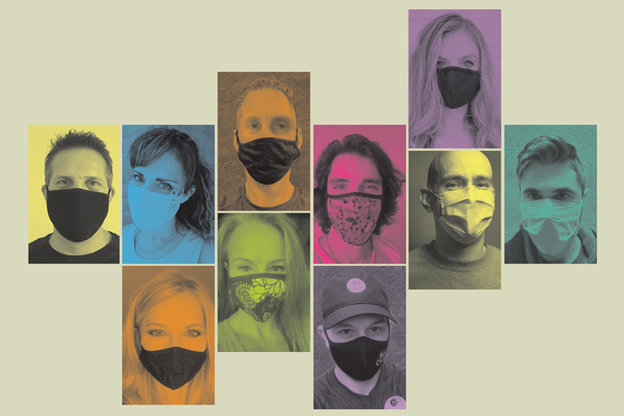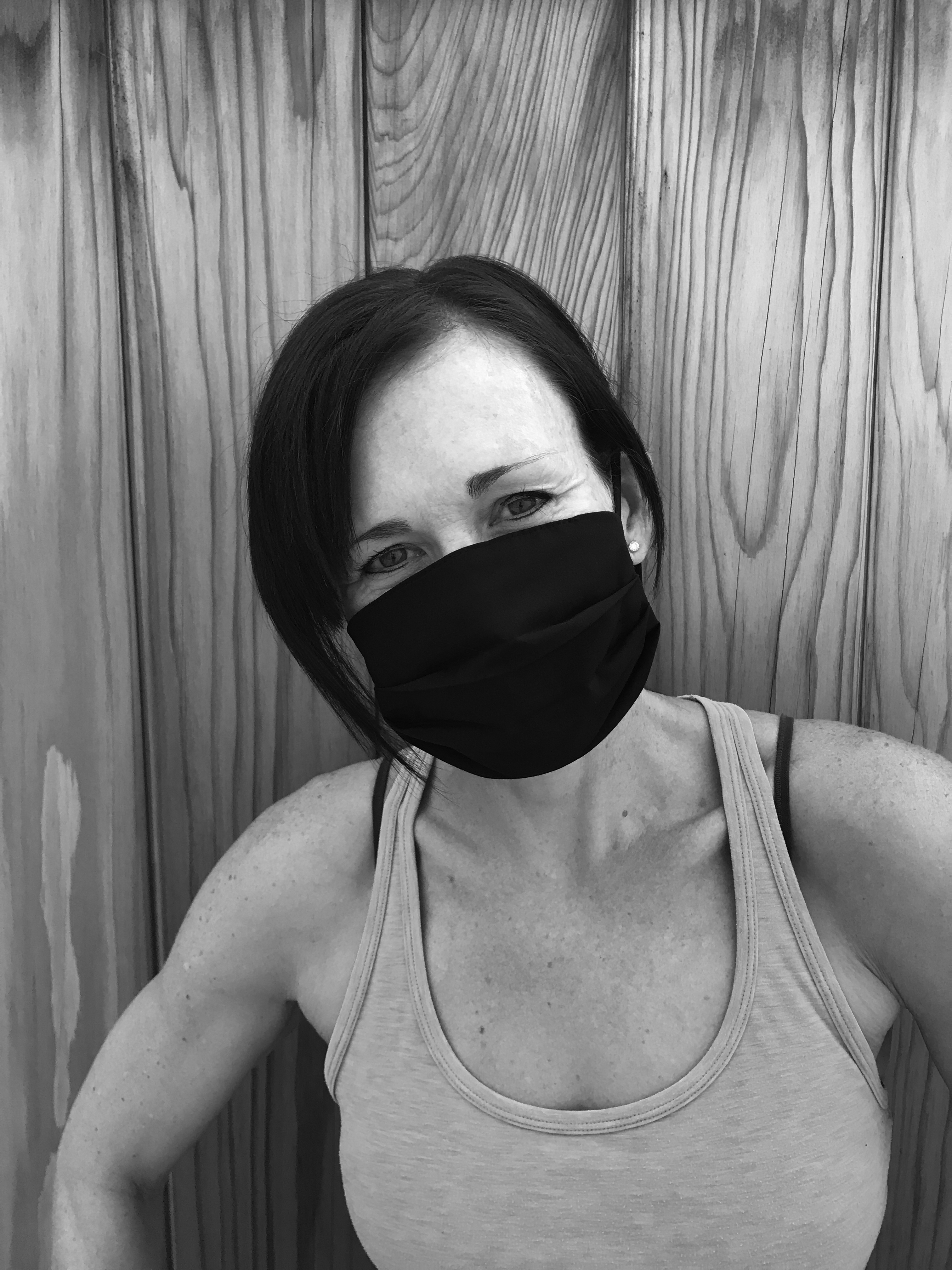Fitness professionals share their stories, surprises and successes—along with the best practices that have emerged from their need to pivot during the pandemic.
This originally appeared in the fall 2020 issue of the American Fitness Magazine.
Personal trainers are no strangers to battling unseen barriers to fitness. For decades, we have helped our clients overcome scheduling issues, flagging motivation, less-than-supportive spouses, preexisting health conditions and more. But the words “unprecedented times” have gotten a lot of use lately for a reason: We’ve never before faced a foe quite like COVID-19. And just a few months after this volatile virus touched down on American soil, our industry—built on the promotion of health and wellness—all but ground to a halt.
“I remember sitting down several times to write a letter to our members,” recalls Steve Bergeron, co-owner of AMP Fitness in Boston. “It went from ‘we’re going to limit sessions’ to ‘we’re going to be closing our doors’ in a matter of a weekend.” By St. Patrick’s Day, he was officially kicked out of his own gym.
Bergeron was not alone: Across the nation, masses of fitness professionals—who had once spent their days constantly on the move—were suddenly stuck at home with nothing to do and no one to coach. Gyms, once seen as epicenters of health, were now viewed as breeding grounds for germs. How would passionate fitness professionals continue to motivate people to improve their strength and wellness?
Fortunately, a huge part of our work has always involved assessing our clients’ unique needs and adapting programs accordingly. In group classes, we offer multiple modifications for various levels and limitations. We address compensations and prevent injuries using corrective exercise principles. We progress and regress clients up and down the NASM Optimum Performance Training™ model, based upon their needs in the moment. We evaluate trends in fitness and nutrition, poring over the latest exercise science to ensure that our programming continues to be on point.
In short, as fitness professionals we know how to pivot. And that’s exactly what we did. While each of us has a unique story of how the quarantine affected our work, we share enough commonalities to learn from one another’s early missteps and to build on those lessons.
In the spirit of helping us grow and move forward stronger than ever—both individually and as an industry—we gathered the following insights from a diverse panel of group fitness instructors, personal trainers, nutrition coaches and fitness studio owners.

Joe Gagner
Don’t Let Changes Make You Short-change Your Work
Joe Gagner, NASM-CPT, CES, PES, FES, believed 2020 would be his year. His personal training career was at an all-time high, he was leading his facility in fitness sales, and he was on track to hit many of his life goals. When California ordered its gyms to close, he reached out to clients to propose face-to-face training outside of the club. Days later, stay-at-home orders put an end to that, too.
With nothing but uncertainty to go on, it was hard to discern how to proceed. Would clubs be back in business after 2 weeks? Should he enjoy a little vacation at home with his wife—they were newlyweds—trusting that things would return to normal by month’s end?
When Los Angeles County was deemed a COVID-19 “hotspot,” it became clear to Gagner that gyms weren’t opening anytime soon. Though he wishes he had acted sooner to begin building his online presence, his slower approach enabled him to grow his client base—and revise his opinion of virtual fitness.
First, Gagner developed some new fee-based options for small-group or personal training via Zoom. Then he reached out to every person he had ever trained and began to build a virtual-client list. His greatest lesson? Don’t devalue yourself in any medium.
“I quickly realized that you must shift your beliefs that online personal training is a lower-quality or less valuable product or service,” he says. “Once I made that mental shift, I was much more comfortable asking for the amount of compensation I felt was fair for my time and effort.”

Mark Fisher
Find New Ways to Service Customers
Visit the website for Mark Fisher Fitness, and you will be greeted by a photo of a ripped Fisher wearing a unicorn cutout as a fig leaf. (His tagline: Serious fitness for ridiculous humans.) Not surprisingly, MFF’s brick-and-mortar locations in NYC are known for their “Ninja Clubhouse” environment and “radically inclusive” community. When he suddenly found his business in the eye of the COVID-19 storm, Fisher put on his unicorn thinking cap and got to work.
He immediately froze all memberships and, ultimately, offered four online options: MFF’s HomeBody, Unicorn Nutrition Coaching, My Broadway Body and Road Warrior—all of which came with virtual high-fives.
Would it be possible to generate the joy and excitement that members experienced during in-studio classes? Fisher wasn’t sure at first.
With help from the government stimulus, though, he retained most of his team and began offering livestream classes, keeping them as close as possible to the Mark Fisher experience. Highlights included rest-period challenges on a messaging platform called Chatbox, regular doses of irreverent and off-color humor, dress-up classes, theme days, and more.
To keep his community communing, Fisher also began offering daily live events online for free, covering a wide array of inspired and inspiring topics, including wellness-based meditation and cooking tips, as well as just-for-fun craft sessions, dance parties and cabarets.
Like Gagner, he soon realized that his online plans were not priced right for all of the effort his team was expending. To adjust for this, he created a series of options at various price points to appeal to clients in different financial situations.
He offered a “supporter” rate for members who wanted to support the club at a higher price point and was pleasantly surprised at the number who chose to participate. Knowing how many were experiencing financial hardship due to COVID-19, he also introduced promo codes for either livestreaming or on-demand workouts or a PDF of “50 workouts in your pocket” that can be done anywhere, using whatever equipment is available.
“What we liked about [having the different subscription options] is it meant we could receive extra help from those who are in a position to support MFF, but on the other end, we wouldn’t let money be a barrier to others,” says Fisher.
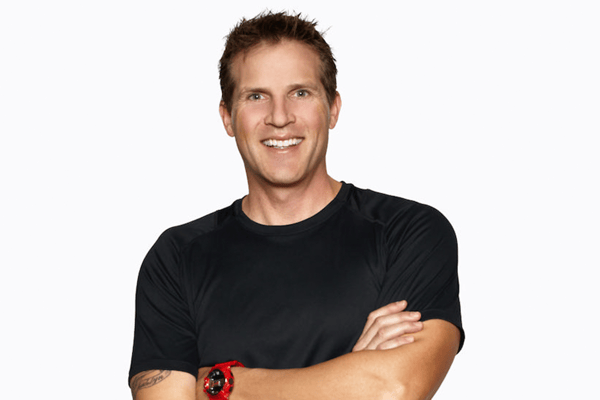
Alex Isaly
Shift Future Plans Into the Present
When the stay-at-home orders were handed down, award-winning coach Alex Isaly had recently started as VP of programming for Xponential Fitness, a California-based company that curates eight brands of boutique studios in 11 countries around the world. These include the self-explanatory modalities of Club Pilates, CycleBar, StretchLab, Pure Barre and YogaSix, as well as Row House (indoor GX rowing), Stride (indoor GX running) and AKT (a multimodal program from celeb trainer Anna Kaiser).
Isaly’s team was poised to launch a digital platform called Xponential Fitness GO, which provides both livestreaming and on-demand classes from each of the brands, as well as additional wellness content for a more holistic health experience. The team quickly put the finishing touches on apps and websites, then rolled them out to members, newly hungry for content at home.
The company also started livestreaming classes on Facebook 8 hours a day, 5 days a week. “I truly believe that we were able to keep the doors open (so to speak) for the franchises to retain their members until the doors reopened (literally),” said Isaly.
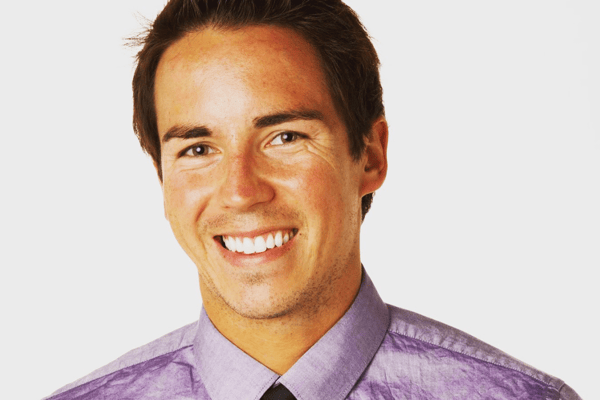
Neil Kohler
Take Advantage of Opportunities—and Grow Them
An interesting result of the gym shutdown was a greater realization of the unique skills possessed by group fitness instructors. For businesses across the country—from big-box gyms to boutique clubs to privately owned single facilities—it was these instructors who rose to the challenge of building real connections in a now-virtual setting through livestreaming classes. For the Los Angeles–based Bay Club, one of those vital virtual team members was Neil Kohler.
Before the crisis, Kohler had been teaching 16 classes per week at five Bay Club gyms and was one of the most beloved instructors at every location. Deciding to teach online was a no-brainer for him. “[Teaching online] gave me something to look forward to each day, plus it brought me into contact with the people I missed seeing in person,” said Kohler.
Although the classes Kohler streamed for the Bay Club were free to anyone wishing to attend, the company continued to pay him. He was teaching far fewer classes than before, however, and that was hurting him financially. When his fans expressed an interest in offering donations for the streaming service, Kohler shared his Venmo info on the group page.
“Knowing the value that I bring to the online fitness marketplace, I also included the option for members to donate for the classes I teach that are not directly related to Bay Club,” he says. “I feel it is important to be compensated for the value that I bring, and at the same time I really enjoy doing it.”
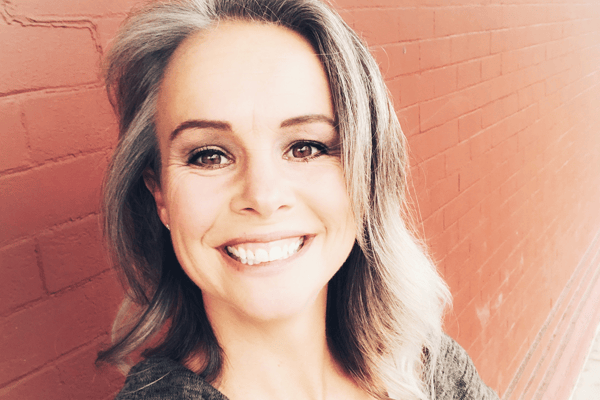
Corry Matthews
Provide Extras as Freebies, but Charge for Your Expertise
Having a long-established online fitness and nutrition planning business, Corry Matthews, MS, of Strength and Grace Fitness would have seemed perfectly positioned to capture the attention of new eyes searching for solutions from home. She was surprised to find that this wasn’t the case.
“Trainers who were working in gyms—and were suddenly at home—started giving away all their services: free workouts, free nutrition plans, etc.,” says Matthews. “This made it really hard for a company that had always been prevalent online to still offer our same high-quality services. People now wanted more free stuff from us and wanted steep discounts.”
To meet this challenge, Matthews and her partner, Stacia Kelly, began to provide free content that supported their business without giving it away. For example, they recorded “coffee break” discussions in which they talked about mental-health issues and gave tips on dealing with stress.
They also created the 21 Day Detox program, which turned limitations imposed by the quarantine into a tool to help clients make meaningful changes. “[People weren’t] going out with friends, at celebrations, barbecues, etc., so working on a program where we eliminate foods and make healthy long-term changes worked,” she says.
Once Matthews began to brainstorm new ways to appeal to a changing marketplace, she was able to channel her energy in the right direction.
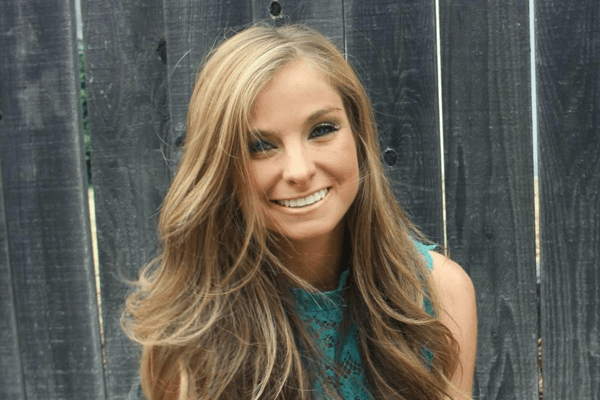
Corrine Glazer
Use the New Normal as an Assessment Tool for Your Work
As a nutrition consultant and clinical dietitian, California-based Corrine Glazer, RDN, was not surprised that her weight loss clients were less motivated to work out after the gyms closed. “Many had a difficult time with motivation and going to the gym [before COVID-19],” she says. Like Matthews, Glazer hoped that the new normal would help them turn over a new leaf. “My hope was for them to see quarantine in a different [light] and to use this time to focus on themselves,” she says.
One of the unexpected advantages of her new telehealth appointments was that she had fewer cancellations. Clients had fewer conflicts (because life had shut down in other ways, too), and she discovered that virtual appointments could feel even more personal than those that took place in the office.
“[In telehealth,] you are able to meet with a client in their own comfortable area,” she explains. “[And] you have the ability to examine their day-to-day eating habits by having them [use their phone camera to] show you their refrigerator and pantry.” This can prove much more accurate and illuminating than asking a person to recall dietary items during an office visit.
Being far-flung also showed clients how important their support groups and in-person classes truly are. “My clients definitely miss human interaction and the ability to share in each other’s stories,” she says. “A lot of my support groups developed relationships with each other, and having [the groups meet] in person allows them to continue to share that bond.”
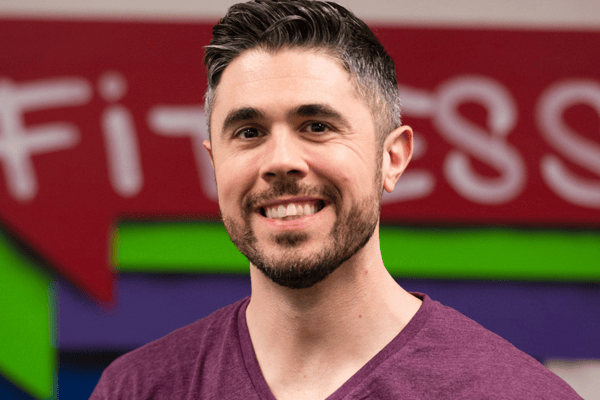
Steve Bergeron
Lift Your Staff Up by Uplifting Others
As the weeks passed and the country began to open up, the fear of an empty weight room was foremost in the minds of gym owners. This was especially true of those like Bergeron, because AMP Fitness drew the majority of its clients from the commuter pool. “Many members have informed us that their offices don’t plan to open back up—period—which is going to chop off a significant portion of our revenue,” he says.
Though Bergeron was able to secure rent deferment for 3 months, he still faces new expenses for sanitizing supplies, social distancing stickers and other COVID-19–related changes required by law. “We’re not expecting to bounce back for a while,” he says.
In the meantime, Bergeron and his staff are doing everything in their power to stay positive and keep community alive. This has had heartwarming effects on his clients as well as on him and his staff. In addition to offering online training and semiprivate training sessions, AMP fostered out all their light equipment for members to use while the gym was closed.
They also took “member outreach” to a nonvirtual level with socially distanced visits. In one case, they presented a member with kettlebells and a cake to cheer him up on his birthday. “[We] left them on his doorstep while we sang ‘Happy Birthday’ from the sidewalk,” says Bergeron.
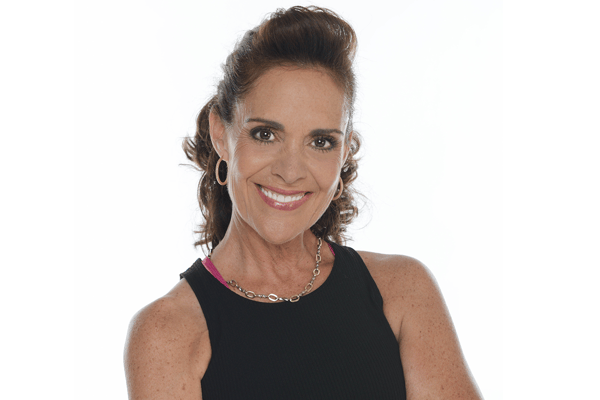
Aileen Sheron
Let Today’s Reality Lead to a Better Tomorrow
There is no doubt that virtual training is here to stay, says Aileen Sheron, inventor of the Omniball® and a 40-year veteran of the fitness industry. Before the outbreak, she’d made a point to diversify her work in fitness, and she has delivered many articles and lectures on why group fitness instructors need to be more entrepreneurial. “I am sure most fitness professionals are really taking a hard look at our industry with a new perspective,” she says.
One of the most powerful changes that could emerge from this pandemic, she says, is that fitness professionals may finally begin to see the flaws that have always existed. “For years, I have been [saying] that we have no representation as a community, like a union or a federation. We don’t have powerful leadership to look out for our best interests.
Most of us in group exercise are part-time independents, and we don’t get sick leave, vacation pay, insurance, etc.,” she explains. “This COVID-19 situation may shed light on some of the major flaws in our industry related to employment, pay, benefits, health care and a long list of other professional standards that are unavailable to our fitness community.”
Today’s enhanced focus on health and wellness can only serve to support our argument that we deserve these protections just as much as anyone else.
“I think the general public is now more aware than ever before of the importance of living a healthy lifestyle,” says Isaly. “Now is the time for health professionals across all practices of health—stress management, sleep management, mental health, exercise and nutrition—to [apply] everything they’ve learned over the years to coach and educate [the public on] the importance of taking the appropriate measures to build and maintain a strong immune system. We are going to need it more than ever, moving forward.”
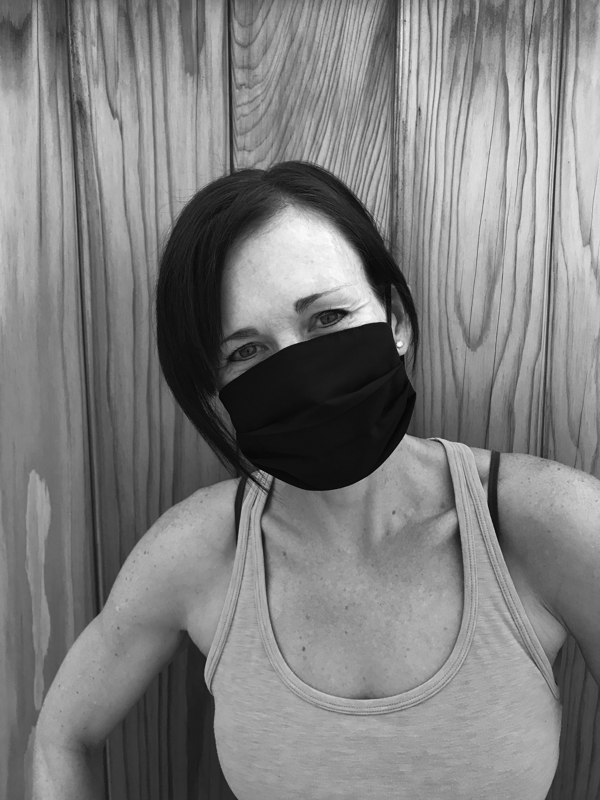
PAMELA LIGHT, MA, is a group fitness instructor and personal trainer in Rancho Palos Verdes, California. She dealt with COVID-19 by streaming classes from her garage via her Facebook group, Pamela’s Light and Fit Community. Her favorite part was that her kids were able to take a break from homeschooling by taking all of her classes—just off-screen, of course!
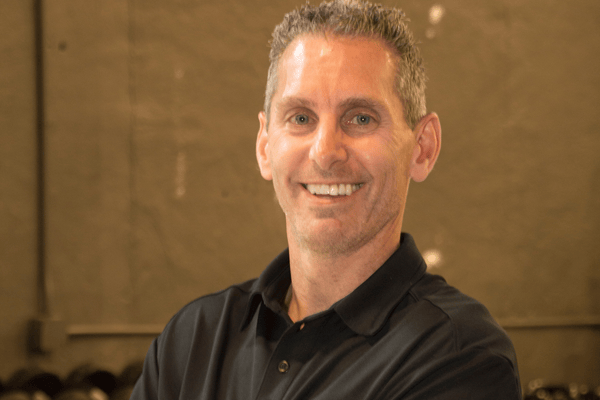
Geoff Lecovin
Should You Keep Your Opinions in Your Pocket?
Faced with incredible polarization surrounding the COVID-19 crisis, it can be tempting for fitness professionals to get on a soapbox. Though we may have the best of intentions, this is not always wise from a business standpoint, says Geoff Lecovin, MS, DC, ND, owner of Northwest Integrative Medicine, an integrative sports injury and sports performance practice in Washington state.
Due to his treatment of acute pain, Lecovin was considered an “essential provider” and was able to keep seeing patients throughout the pandemic. He quickly learned that the best way to nurture relationships with his clients was to be a neutral listener. “There has been a lot of misinformation disseminated through social media,” he says. “While I have my opinions, I have opted to stay in the middle and simply listen without judgment.”
He believes this approach remains the best way for health professionals to help. “The public looks to health professionals for advice pertaining to staying healthy and preventing illness. Health professionals should offer evidence-based solutions and, when possible, cite credible sources.”
Learn the Fundamentals of Virtual Coaching
You can now offer personal training and coaching sessions from the comfort of your own home with NASM’s Virtual Coaching program (CEUs: 0.5). Learn everything you need to train and coach virtually, from programming for a digital format and setting up equipment to navigating apps, accepting payment and more.
As part of NASM’s Fundamentals of Virtual Coaching, you’ll learn
• how to start your online personal training business,
• the difference between virtual training and prewritten programs,
• the benefits and drawbacks of online training,
• how to address billing considerations, and
• how to prepare client documentation.
Find out more at nasm.org/products/fundamentals-of-virtual-coaching.
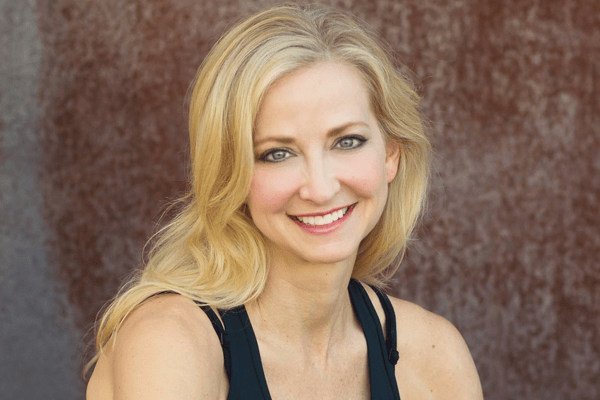
Angie Miller
Building Resilience: A Beautiful Side Effect of Exercise
Gyms provide a world where the health-minded can congregate. Instructors and trainers are the tour guides who welcome and lead people to health in that world. Without fitness professionals, the gym is just a building with weights. With fitness professionals, it is a community.
When the fitness facilities first closed, it was a bit of a heartbreak for many group fitness instructors, who thrive on the high-powered social interaction of large classes. “That’s my happy place where I go to connect communities and share my passion,” says Angie Miller, MS, a Master Instructor for NASM and AFAA. But that was just the first domino to fall. Days later, all of her upcoming in-person NASM workshops and presentations were also canceled. “Then came the cancellation of IDEA® World, where it’s always such an honor to present,” she says.
Like so many others across the nation, Miller accepted the changes and adapted. She began filming video presentations in lieu of workshops, hosting a weekly webinar and helping more people than ever as a licensed clinical mental health counselor. But despite finding her new normal, Miller missed all the energy that comes with in-person meetups.
To build resilience, she relied on journaling, reading, working out in her home studio and talking on the phone with her best female friends. She also made it a point to let herself feel all she feels.
“Health, fitness and wellness are the backbone of what builds resilience,” says Miller. “I believe that I can manage whatever comes my way, and when I need to cry, I cry. I allow myself to experience my emotions, but not to get lost in them.”
“Physical empowerment helps build emotional empowerment and fortitude,” she adds. That means fitness professionals are not only primed to weather any storm; they also are actively priming their clients and members to do the same.
QUOTES:
“I quickly realized that you must shift your beliefs that online personal training is a lower-quality or less valuable product or service. Once I made that mental shift, I was much more comfortable asking for the amount of compensation I felt was fair for my time and effort.” —Joe Gagner, NASM-CPT, CES, PES, FES
“This COVID-19 situation may shed light on some of the major flaws in our industry related to employment, pay, benefits, health care and a long list of other professional standards that are unavailable to our fitness community.” —Aileen Sheron

